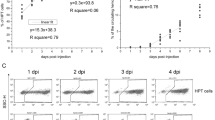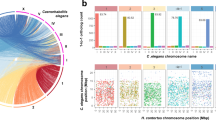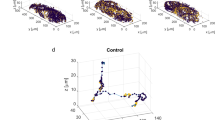Abstract
ALTHOUGH haemoglobin is present in numerous parasitic nematodes, it has never been recorded from a free-living form1. Even the recent demonstration of its presence in the free-living egg-laying female of Mermis subnigrescens2 scarcely affects the generalization, for Mermis is parasitic in insects for most of its life-history. However, we have now found that it is present in abundance in the purely marine form Enoplus brevis and, to a lesser extent, in E. communis.
This is a preview of subscription content, access via your institution
Access options
Subscribe to this journal
Receive 51 print issues and online access
$199.00 per year
only $3.90 per issue
Buy this article
- Purchase on SpringerLink
- Instant access to full article PDF
Prices may be subject to local taxes which are calculated during checkout
Similar content being viewed by others
References
Lee, D. L., The Physiology of Nematodes (Oliver and Boyd, London, 1965).
Ellenby, C., Nature, 202, 615 (1964).
Cobb, N. A., J. Parasitol., 8, 66 (1926).
Schuurmans-Stekhoven, J. H., Tierwelt N.-u. Ostsee, 5b (1935).
Ellenby, C., and Smith, L. (unpublished).
Author information
Authors and Affiliations
Rights and permissions
About this article
Cite this article
ELLENBY, C., SMITH, L. Haemoglobin in a Marine Nematode. Nature 210, 1372 (1966). https://doi.org/10.1038/2101372a0
Published:
Issue date:
DOI: https://doi.org/10.1038/2101372a0



